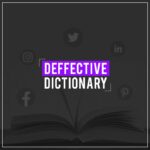
As of today, the existence and popularity of a brand are only as good as their online presence via organic reach. After all, the world’s a stage, and digital marketing professionals are merely players who have to apply strategies to grab the attention of potential consumers
Organic reach is the primary way of reaching new audiences and is often a long-drawn process. Paid and sponsored content might get your content to reach them, but employing profitable unpaid reach campaigns is just as important. Not only do you receive the slow but sure perks of a loyal follower base, you also incur lower costs on the paid promotion front. And once you hit the sweet spot between the right amount of paid and organic reach, there is no stopping!
Organic reach
Organic reach counts the number of new users or individuals who have seen a piece of content published online. There is no expenditure involved here. It is possible to gain a larger reach through strategies that enrich content with elements like keywords and hashtags. It is one of the most fundamental metrics in social media marketing and is very important to drive more engagement. The higher the number of people who see a post, the higher the chance you have at getting them to like, share or interact further.
Target Audience
The most effective marketing concepts will fail if they are not targeting a certain group of people. The misidentification might even be the difference between life and death for a brand. Not to mention, the waste of a brilliant idea that would have given tons of returns had the audience been figured out.
A target audience is a group of people you want to direct your message to. When brands have a wider audience, they often designate certain messages for certain groups of people within the bigger number. For example, a high fashion brand may have an audience across age groups and genders. But they can target women from their broader target on occasions like Women’s Day through exclusive coupons or contests.
Engagement
Any action that a consumer can perform is engagement. For example, in a video posted to YouTube, engagement would include playback duration, speed of playback, and likes.
The key is to give your audiences a taste of what you have to offer and have them come back for more. A brand must consider what value they can provide to their followers; something their competitors don’t. That will encourage them to follow, share and interact with the brand.
Putting engagement into numbers is how brands can measure their campaigns’ performance and chart better strategies in the future. This number calls the engagement rate. It is the ratio between the number of engagements and total followers on a platform. The same is based on a percentage by multiplying it by 100.
Here’s the formula:
Engagement rate = (Total number of engagements/Total number of followers on the platform) *100
Search Engine Optimisation (SEO)
All search engines work on similar mechanisms. Once a user hits enter on a search bar, a crawler scans millions of documents on the internet to look for the ones that have the terms from the search thread. Then according to their relevance and popularity, a search engine algorithm builds an index of results.
Search Engine Optimisation is the sorcery that writers and researchers do to rank among the top results and increase their chances of getting clicked on. Since it is a part of the dozens of strategies to improve organic reach, there is no paid promotion activity. This means that the content created must be of use to consumers who surf the internet for the helpful material.
Experts have found that social media platforms are using their own form of SEO in a way that promotes good user experiences. This algorithm works by putting your posts in a very small pool of your followers. If these individuals engage with the material, then it is introduced into a larger pool. More and more people slowly but surely see it, but only if it’s engaging.
The secret to great organic reach is the same as the secret to great rankings on search engines. It’s all about optimisation, experience with users, and content of very high quality. You’ll see the pieces fall into place if you start thinking about your social media efforts in the same way you think about your SEO work.
-
Content that rocks the world
06 November, 2020 -
Design: Bringing Ideas to Life
12 November, 2020 -
Whassup Bud: One of Budweisers’ Evergreen Television Ad Campaign
20 November, 2020 -
Brands must be Gods
27 November, 2020 -
The Deffective Dictionary
08 January, 2021






